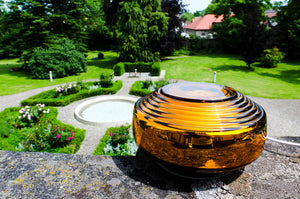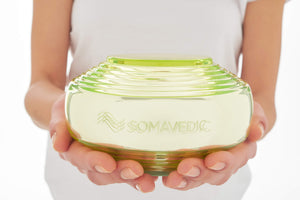
Mitochondria: What Is It And What Role Does It Play In Your Body?
Have you ever wondered how your body has all the energy to get you through the day? Most of you might attribute it to that cup of coffee you just had while reading this. However, that’s not entirely true.
The human body consists of trillions of cells, each consisting of several proteins and enzymes essential to overall body function. One such part is mitochondria, which generates energy for all other cells in the body. It is also referred to as the ‘powerhouse of the cell.’
What is Mitochondria?
Mitochondria is an organelle in your cells that produce energy. ATP (adenosine triphosphate) is the energy currency of your cells, and mitochondria is responsible for making it. ATP is used by cells for a variety of functions, including muscle contraction, cell division, and protein synthesis.
The number of mitochondria in a cell varies depending on the needs of the cell. For example, cells that require a lot of energy, such as muscle cells, will have more mitochondria than other types of cells.
Importance of Mitochondria
Mitochondria is essential for many reasons. It produces energy for the cell, helps regulate cell growth and death, and plays a role in calcium homeostasis. Also, mitochondria is involved in some disease processes, such as diabetes, cancer, Alzheimer’s disease, muscular dystrophy and many other conditions. Understanding their function is essential for developing treatments for specific needs.
Why is it Important to Protect the Mitochondria?
Your cells need energy to function, and mitochondria produce that energy in the form of ATP through oxidative phosphorylation. It generates a lot of reactive oxygen species (ROS) or free radicals, which can damage cellular components like DNA and proteins.
Mitochondria can be harmful if they're not working correctly. When mitochondria produce too much ROS, it's called oxidative stress, and it can lead to cell damage and diseases such as heart disease, diabetes and cancer, among other conditions. Hence, protecting your mitochondria is vital.
EMF and Mitochondria
Mitochondrial DNA damage means there has been some disruption in how this cellular organ functions. EMF radiation can damage mitochondrial DNA and directly impact your overall health because they play vital roles in almost every aspect of life on Earth!
Exposure to EMF radiation increases reactive oxygen species (ROS) levels, damaging mitochondrial DNA and causing cellular damage. ROS are produced by the cells as part of their standard defence system, but when increased abnormally, they can cause cell death.
A study by The Faculty of Radiation Oncology found that exposure to radiofrequency field radiation from mobile phones can induce mitochondrial dysfunction in living skin cells. This confirms that the mitochondria, which are located inside each cell, are damaged by EMFs.
How to Improve Mitochondrial Health?
There are a few things you can do to improve mitochondrial health:
- Eat a healthy diet: Mitochondria rely on nutrients from the food we eat to function correctly. Therefore, eating a diet high can help ensure that the mitochondria have the nutrients they need to function optimally.
- Exercise regularly: Exercise helps improve mitochondrial function by increasing the production of proteins involved in energy production.
- Get enough sleep: Sleep is vital for overall health and critical for proper mitochondrial function. When we don’t get enough sleep, it can change how the mitochondria produce energy, eventually leading to cell damage.
- Healing crystals and Gemstones: Healing crystals and gemstones may be beneficial for improving mitochondrial function by helping to restore balance within your cellular environment — thus promoting overall wellness!
Gemstones work by enhancing energy flow and helping to heal the body. They are known for their ability to balance the internal environment, which includes endocrine systems and organs.
The most common types of gemstones include:
- Jade: Jade heals adrenal glands by stimulating circulation through the kidneys and balances blood sugar levels. It is a stone well-known for protecting against EMF.
- Rose Quartz: It promotes mental well-being by releasing serotonin into the brain tissue and mitigating the effects of EMF radiation.
- Lapis Lazuli: This gemstone enhances memory recall while protecting against radiation stressors.
Gemstones can be worn as jewellery or carried with you in your pockets. You can also place these gemstones in certain places in your house to help EMF mitigation.
Using gemstones and specific lifestyle changes could be an effective way to help eliminate the EMF risk and improve overall health and wellness. Specific devices such as the Somavedic devices can also be helpful to minimise the risk or unwanted influences of EMF radiation that may be due to 4G/5G, mobile phones or Wi-Fi. Through several lab tests, specific devices such as the Somavedic’s Amber or Anthracite have proven to have positive results on the cells and bodies to help mitigate the EMF risk, creating a coherent and positive environment that’s shown to activate the self-healing process of the body and mind.
References
- Gahl, W. (2020). Mitochondria. Genome.gov.
- Santini, S. J., Cordone, V., Falone, S., Mijit, M., Tatone, C., Amicarelli, F., & Di Emidio, G. (2018). Role of Mitochondria in the Oxidative Stress Induced by Electromagnetic Fields: Focus on Reproductive Systems. Oxidative Medicine and Cellular Longevity, 2018, 1–18.
- Ma HR, Ma ZH, Wang GY, Song CM, Ma XL, Cao XH, Zhang GH. Impacts of exposure to 900 MHz mobile phone radiation on liver function in rats. Zhongguo Ying Yong Sheng Li Xue Za Zhi. 2015 Nov;31(6):567-71.
Related articles
-

Black Friday with Somavedic = Peace Amid the Price Frenzy
-

Somavedic Improves Regeneration and Performance
-

3 Reasons why Your Cells love Structured Water
-

The Latest Trends for Everyday Wellbeing Without EMF
-

Sleep Biohacking: Are You Really Sleeping Well?
-

How to Choose a Device for Structured Water: A Beginner’s Guide
-

The Best EMF Protection: Navigating the Digital Jungle
-

When the Office Becomes a Wellness Center: 10 Tips for a Harmonious Work Environment
-

A Harmonized Environment Naturally Supports Your Immunity
-

Somavedic - The Path to Harmony in the Modern Age with Ivan Rybjanský and Gabriela Partyšová
-

Somavedic Traveller: Peaceful Sleep and a Harmonized Space, Even While Traveling
-

Somavedic – Natural Wellness for Your Body, Mind and Home
-

How to Protect Your Home and Office from EMF with Somavedic
-

How Somavedic Helps with EMF Protection
-

How Somavedic helps in your home or office
-

Discover what Somavedic is and how frequency therapy works
-

Somavedic at the Mind Body Spirit Festival London 2025
-

How Structured Water Can Improve Your Life
-

Collagen, Aging, and Somavedic: What Truly Affects Our Vitality?
-

How to Structure Water with Somavedic
-

Somavedic as a Path to Regaining Vitality After COVID
-

Somavedic Amber: A Personal Story – How I Overcame Osteoarthritis
-

Quality Deep Sleep – Reduces Stress and Strengthens the Nervous System
-

How to Improve Sleep Quality with Somavedic
-

Sleep and Hormonal Balance: Why Women Need Rest to Thrive
-

A Year of Wellness: How Somavedic Transforms Your Life Month by Month
-

Understanding EMFs - Their Adverse Effects and Ways to Lower Their Impact
-

The Link between Biohacking and Fertility and How to Improve It
-

Creating a Sleep Sanctuary: Crafting the Ideal Bedtime Routine for Better Sleep
-

HRV and Deep Sleep - Their Importance and Ways to Improve them
-

Light Healing With the Infrared Light
-

Deep Healing Music for Body and Soul
-

How Sleep Works and How to Improve it?
-

Under the Fuji mountain
-

A Beginner’s Guide to Meditation


































